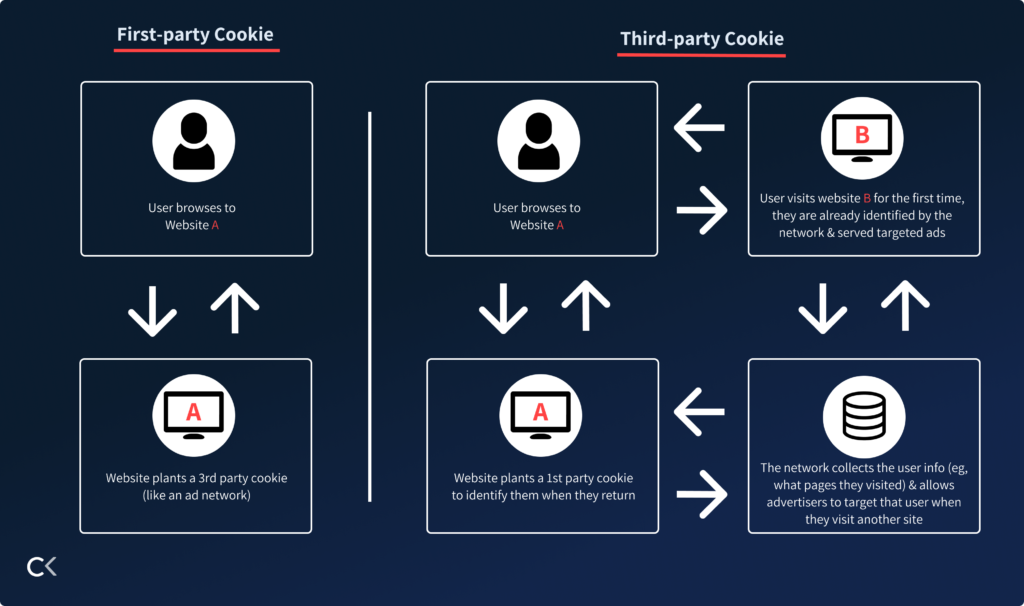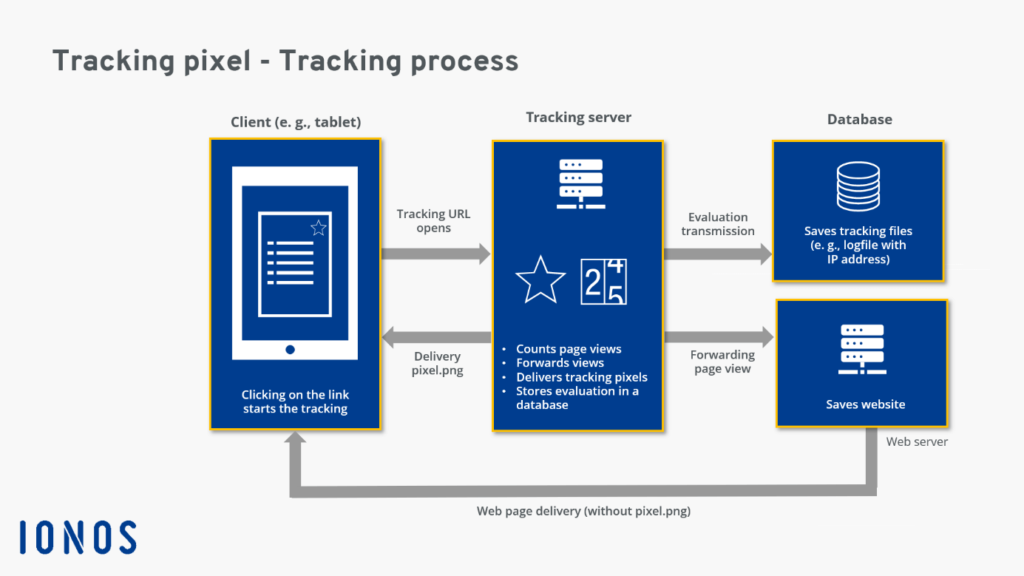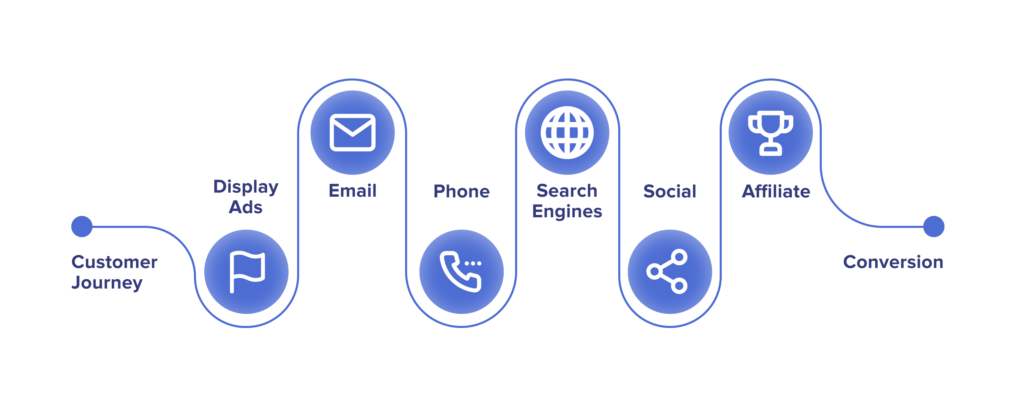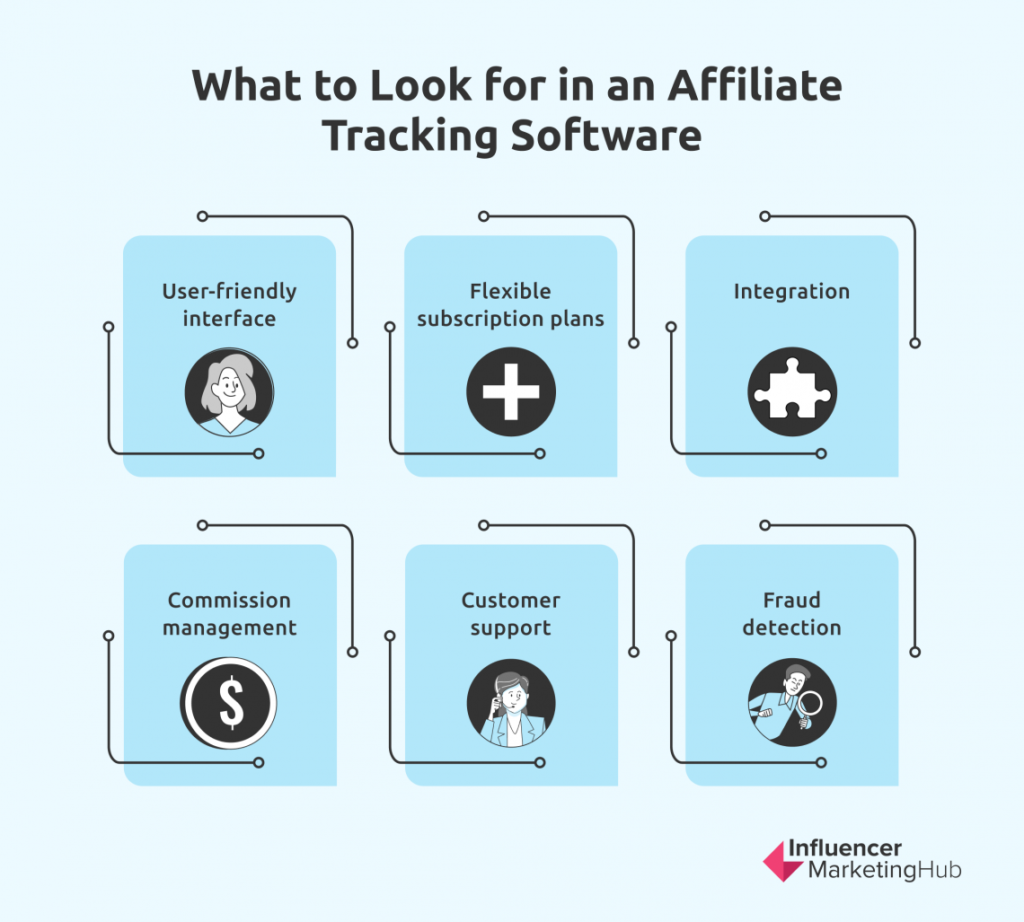Deep Dive into Affiliate Tracking: Understanding Cookies, Pixels, and Attribution Models
Ever wonder how your favorite online influencers manage to recommend products so seamlessly? It’s not just about their charm—it’s the magic of affiliate marketing at work!
This digital strategy isn’t just a buzzword; it’s a game-changer, accounting for a whopping 16% of all online orders.
But here’s the kicker: how do businesses know if their affiliate efforts are hitting the bullseye?
That’s where affiliate tracking swoops in like a superhero. It’s the Sherlock Holmes of the online world, meticulously measuring the impact of every marketing move.
From cookies to pixels and attribution models, it’s a wild ride into the nitty-gritty of online success.
So, buckle up as we dive deep into the world of affiliate tracking. Trust me; it’s a journey worth taking!
Section 1: Understanding Cookies
Cookies are the unsung heroes of the internet, quietly working behind the scenes to enhance our online experiences.
But in the realm of affiliate tracking, they play a starring role, acting as the digital breadcrumbs that lead businesses to their customers.
So, let’s break down what cookies are and how they shape the landscape of online tracking.
1.1. Explanation of What Cookies Are in the Context of Online Tracking
Cookies are small pieces of data stored on a user’s browser by websites they visit. In the context of online tracking, cookies serve as identifiers, allowing websites to remember user preferences, login information, and other browsing history.
They’re like tiny notes left behind by websites, helping them recognize returning visitors and tailor their experiences accordingly.
1.2. Types of Cookies Used in Affiliate Tracking
- First-Party Cookies: These cookies are set by the website the user is currently visiting and are primarily used to enhance user experience and track basic analytics.
- Third-Party Cookies: These cookies are set by domains other than the one the user is currently visiting. In affiliate tracking, third-party cookies are often utilized by affiliate networks to track referrals and conversions across multiple websites.

1.3. How Cookies Are Utilized in Tracking Affiliate Referrals and Conversions?
When a user clicks on an affiliate link, a unique identifier (usually in the form of a cookie) is stored on their browser. This cookie contains information such as the affiliate’s ID and the product or service being promoted.
As the user navigates through the website and completes a purchase or desired action, the affiliate cookie allows the affiliate network to attribute the referral to the appropriate affiliate and track the conversion, ensuring they receive proper credit for their marketing efforts.
1.4. Limitations and Challenges Associated With Cookie-Based Tracking
- Cookie Lifespan: Cookies have a finite lifespan, meaning they can expire or be deleted by the user, potentially leading to inaccuracies in tracking.
- Privacy Concerns: With growing concerns about online privacy, many users are taking measures to restrict or block cookies, making it more challenging for businesses to track user behavior accurately.
- Cross-Device Tracking: Cookies are typically device-specific, making it difficult to track user behavior across multiple devices accurately.
Despite these limitations, cookies remain a fundamental tool in affiliate tracking, providing valuable insights into user behavior and campaign performance.
As technology evolves and privacy regulations tighten, businesses must adapt their tracking strategies to ensure compliance and maintain the integrity of their affiliate programs.
Section 2: Exploring Pixels
In the ever-evolving world of affiliate marketing, pixels are the silent observers, meticulously tracking user interactions and conversions with surgical precision.
Let’s shine a light on the mysterious world of pixels and uncover their role in the intricate dance of affiliate tracking.
2.1. Definition and Purpose of Pixels in Affiliate Marketing
Pixels are tiny, invisible images or code snippets embedded on web pages. In affiliate marketing, pixels serve as tracking mechanisms, allowing advertisers and affiliate networks to monitor user interactions and attribute conversions to specific affiliates.
Essentially, pixels act as digital spies, silently observing user behavior and reporting back to the powers that be.
2.2. Different Types of Tracking Pixels Commonly Used by Affiliate Networks and Advertisers
- Conversion Tracking Pixels: These pixels are deployed on confirmation or thank-you pages after a desired action has been completed, such as a purchase or sign-up. They signal to the affiliate network that a conversion has occurred, enabling them to attribute the action to the appropriate affiliate.
- Retargeting Pixels: These pixels are used to track user behavior across the web and deliver targeted advertisements based on their interactions with a website or specific products. They allow advertisers to re-engage users who have shown interest but haven’t completed a desired action.
2.3. How Pixels Work to Track User Behavior and Conversions?
When a user visits a website with pixel tracking enabled, the pixel code is triggered, sending information back to the affiliate network or advertiser’s server.
This information typically includes details such as the user’s IP address, browser information, and the referring website.
By analyzing this data, advertisers can gain insights into user behavior patterns and optimize their marketing strategies accordingly.

2.4. Advantages and Disadvantages of Pixel-Based Tracking Compared to Cookie-Based Tracking
Advantages:
- Cross-Device Tracking: Unlike cookies, pixels are not device-specific, allowing for more accurate tracking of user behavior across multiple devices.
- Real-Time Tracking: Pixels provide instantaneous feedback on user interactions, enabling advertisers to make timely adjustments to their campaigns.
Disadvantages:
- Dependency on JavaScript: Pixel tracking relies on JavaScript, which can be disabled by users or blocked by browser extensions, potentially leading to incomplete tracking data.
- Privacy concerns: Like cookies, pixels raise privacy concerns among users, who may take measures to block or limit their effectiveness, impacting the accuracy of tracking data.
Despite these challenges, pixels remain a valuable tool in the arsenal of affiliate marketers, providing invaluable insights into user behavior and campaign performance.
As technology continues to evolve, advertisers must adapt their tracking strategies to ensure compliance with privacy regulations and maintain the integrity of their affiliate programs.
Section 3: Attribution Models
In affiliate marketing, attribution models serve as the compass guiding businesses through the labyrinth of user interactions and conversions.
Let’s unravel the mysteries of attribution models and explore their profound impact on the world of affiliate tracking.
3.1. Explanation of Attribution Models in Affiliate Marketing
Attribution models are methodologies used to assign credit to various touchpoints in the customer journey leading to a conversion.
They help businesses understand the contribution of each marketing channel or affiliate to the outcome, whether it’s a purchase, sign-up, or other desired action.
Essentially, attribution models shine a spotlight on the path users take before making a decision, illuminating the effectiveness of different marketing efforts along the way.

3.2. Overview of Commonly Used Attribution Models
- Last-Click Attribution: This model assigns all credit for a conversion to the last interaction a user had before completing the desired action. It’s like giving the final touchpoint in the customer journey all the glory.
- First-Click Attribution: In contrast to last-click attribution, this model attributes all credit to the first interaction a user had with a marketing channel or affiliate. It’s about acknowledging the initial spark that ignited the customer journey.
- Multi-Touch Attribution: This model recognizes that the customer journey is often complex and nonlinear, involving multiple touchpoints across various channels.
Multi-touch attribution assigns credit to multiple interactions along the path to conversion, providing a more holistic view of campaign effectiveness.
3.3. How Attribution Models Impact Affiliate Tracking and Performance Measurement?
Attribution models shape the narrative of affiliate tracking, influencing how credit is allocated to affiliates based on their contribution to the customer journey.
They provide valuable insights into which affiliates are driving the most meaningful interactions and conversions, empowering businesses to optimize their marketing strategies accordingly.
3.4. Considerations for Selecting the Most Appropriate Attribution Model for Your Affiliate Program
- Understand Your Customer Journey: Analyze your typical customer journey to identify the key touchpoints and interactions that lead to conversions. It will help you choose an attribution model that best reflects the reality of your customer’s behavior.
- Align With Business Goals: Consider your overarching business objectives and how different attribution models align with those goals. For example, if your focus is on acquiring new customers, a first-click attribution model may be more suitable.
- Experiment and Iterate: Don’t be afraid to experiment with different attribution models and refine your approach over time. What works for one business may not necessarily work for another, so be open to adaptation and iteration to find the right fit for your affiliate program.
By understanding the nuances of attribution models and their implications for affiliate tracking, businesses can gain deeper insights into the effectiveness of their marketing efforts and make informed decisions to drive growth and success in the competitive landscape of affiliate marketing.
Section 4: Best Practices for Effective Affiliate Tracking
With affiliate marketing, success hinges on more than just luck—it’s about strategic planning, meticulous execution, and continuous optimization.
Let’s explore some tried-and-true best practices for mastering the art of affiliate tracking and maximizing your marketing ROI.
4.1. Tips for optimizing affiliate tracking processes
- Implement Robust Tracking Systems: Invest in reliable tracking software or platforms that provide accurate and real-time data on affiliate referrals, conversions, and payouts.
- Regularly Audit Tracking Mechanisms: Conduct routine audits of your tracking systems to ensure they’re functioning correctly and capturing all relevant data points.
- Track Beyond the Click: Don’t just focus on tracking clicks; delve deeper into user behavior by monitoring post-click activities, such as time on site, page views, and conversion rates.

4.2. Importance of Transparency and Communication Between Affiliates and Advertisers
- Establish Clear Terms and Conditions: Define expectations, commission structures, and payment terms upfront to avoid misunderstandings or disputes down the line.
- Provide Regular Updates: Keep affiliates informed about campaign performance, upcoming promotions, and any changes to tracking processes to foster trust and collaboration.
- Address Concerns Promptly: Be responsive to affiliate inquiries and address any issues or concerns promptly to maintain positive relationships and ensure continued engagement.
Here are some more insights on what mistakes you should avoid in affiliate marketing.
4.3. Utilizing Advanced Tracking Techniques and Technologies:
- Explore Multi-Channel Attribution: Move beyond traditional last-click attribution and experiment with multi-touch attribution models to gain deeper insights into the customer journey.
- Implement Cross-Device Tracking: Invest in technologies that enable cross-device tracking to accurately attribute conversions across desktops, smartphones, and tablets.
- Utilize Dynamic Tracking Parameters: Incorporate dynamic tracking parameters into affiliate links to capture additional data points, such as campaign IDs, keywords, or demographics, for more granular analysis.
Section 5: Navigating the Future of Affiliate Tracking: Emerging Trends and Technologies
In the ever-evolving landscape of affiliate marketing, staying ahead of the curve is essential for maintaining a competitive edge and driving continued success. Let’s explore some emerging trends and technologies shaping the future of affiliate tracking and how businesses can adapt to these changes to maximize their impact.
5.1. AI and Machine Learning
As the volume of data generated by affiliate tracking continues to grow, AI and machine learning technologies are becoming increasingly valuable for analyzing and interpreting this data. By leveraging AI-powered algorithms, businesses can gain deeper insights into user behavior, predict future trends, and optimize their marketing strategies in real time.
5.2. Blockchain Technology
Blockchain technology holds the potential to revolutionize affiliate tracking by providing a secure and transparent ledger of transactions. By utilizing blockchain-based tracking solutions, businesses can enhance trust and transparency in their affiliate programs, mitigate fraud, and streamline payment processes.
5.3. Cross-Device Tracking Solutions
With the proliferation of mobile devices and the increasing complexity of the customer journey, cross-device tracking solutions are becoming essential for accurately attributing conversions across multiple devices.
By implementing advanced cross-device tracking techniques, businesses can gain a more holistic view of the customer journey and ensure that affiliates receive proper credit for their contributions.
5.4. Privacy and Compliance
With the growing emphasis on consumer privacy and data protection regulations such as GDPR and CCPA, businesses must prioritize privacy and compliance in their affiliate tracking practices.
By adopting privacy-centric tracking solutions and transparent data-handling practices, businesses can build trust with consumers. This will also ensure compliance with regulatory requirements.
Want to learn more about what data privacy entails in digital marketing?
Check out our blog on data privacy in digital marketing.
5.5. Enhanced Data Visualization and Reporting
Effective data visualization and reporting tools are crucial for translating complex tracking data into actionable insights.
By investing in advanced reporting dashboards and visualization tools, businesses can empower affiliates to make data-driven decisions and optimize their marketing strategies for maximum impact.
As businesses navigate the future of affiliate tracking, it’s essential to embrace these emerging trends and technologies to drive continued growth and success in the dynamic world of affiliate marketing.
By staying informed, adapting to changes, and leveraging innovative tracking solutions, businesses can maintain a competitive edge and unlock new opportunities for growth and expansion in their affiliate programs.
Related Posts
What To Do After Learning Affiliate Marketing?: Applying The Best Practices
Is Affiliate Marketing Safe? The Risks And Remedies
Navigating the World of Affiliate Marketing for Bloggers
Affiliate Marketing Mistakes to Avoid: Tips from Successful Affiliates
Conclusion
In this comprehensive guide to affiliate tracking, we’ve delved deep into the intricate workings of cookies, pixels, attribution models, and best practices for optimizing your affiliate marketing efforts.
So, as you embark on your affiliate marketing journey, remember to keep a keen eye on your tracking mechanisms, communicate openly with your affiliates, and embrace the power of advanced tracking techniques and technologies.
By doing so, you’ll be well-positioned to navigate the ever-changing landscape of affiliate marketing and achieve your business goals with confidence and clarity. Here’s to your continued success in the exciting world of affiliate marketing!
